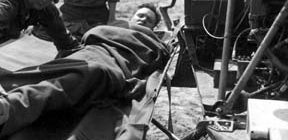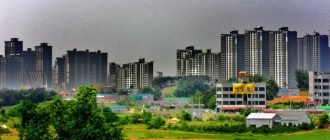Studying the Korean War timeline? Read ahead to find out the battles and offenses of the war between North and South Korea…
The gruesome history of the Korean War includes many skirmishes and battles fought over decades and have been the main reason for the divide between North Korea and South Korea. North Korea infringed on South Korean territory on June 25, 1950. Task Force Smith was deployed at Osan, South Korea on July 6, 1950 and the next skirmish occurred at the Kum River Line defense in the area of Taejon. The offensive started on the 11th and ended after the loss of many lives on July 22, 1950.
The Pusan Perimeter offenses started on August 4, 1950 and ended on September 16, 1950. It was followed by the landing at Inchon on September 15, 1950. Finally Seoul was liberated after a battle occurring from the 21st to the 30th of September 1950. South Korean forces advanced towards the west coast of North Korea and gained a massive amount of ground from October 1 to October 27, 1950.
The forces met severe resistance and had to withdraw to the Ch’ongch’on River Defense Line. A second assault was started when a battalion of the South Korean Army marched westwards into North Korea October 28 all the way through November 25. Eventually the forces landed at Iwon and then raced to conquer territory on the East Coast known as the Yalu region.
The offensive lasted from October 31 to November 27. After that, the end of the year from November 28 to December 23 saw the withdrawal of troops to the West Coast all the way back to the Imjin River Line.
Eventually the X-Corps also fought from December 1 – 24, 1950 and had to withdraw towards the east coast. The end of the year was brought in by battling at the 37th parallel and Samch’ok, which lies on the East Coast. The offensive started on December 26, 1950 and ended in January 1951. The I Corps managed to advance to the South Bank of the River Han to reach the famed Line Boston. This offensive was started on February 18, 1951 and lasted till March 6, 1951. The second liberation of Seoul was achieved after a battle was fought from the 4th to the 21st in April 1951 where the Army advanced to the northern part of Seoul to reach the Phase Line Kansas.
The Major Communist Offensive
The major Communist offensives were launched in five phases known as the NKPA and took place in Seoul, Suwon, Taejon, Naktong and Pusan. These were conducted from June 25, 1950 up to June 29, 1950, June 30, 1950 up to July 6, 1950, July 7, 1950 up to July 20, 1950, July 21, 1950 up to August 30, 1950 and finally in August 1950 up to September 15, 1950 respectively.
These were followed by the CCF offenses, which included the warning, the main attack followed by the counterattack in the Wonju – Chipyong-ni regions. Subsequently the first Spring offensive and then the second Spring offensive were launched. These offensives lasted from the 25th of October 1950 up till May 22, 1951. By the sixth phase of the CCF attacks the offensive was canceled and rerouted to launching limited operations by September 1951. These included attacks on the Central as well as Western fronts along with the Kumsong River Offensive, which ran during the middle of July in 1953.





